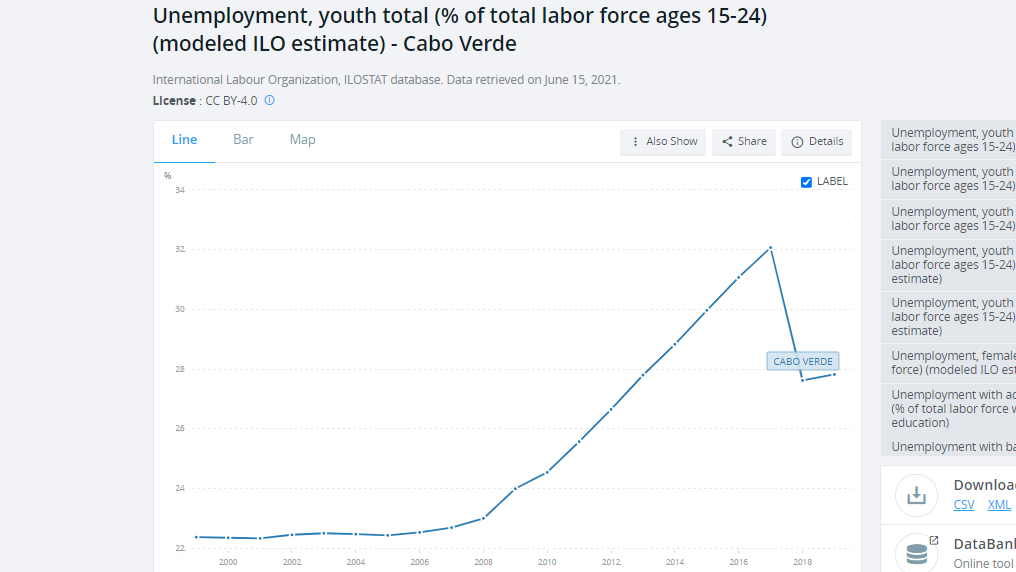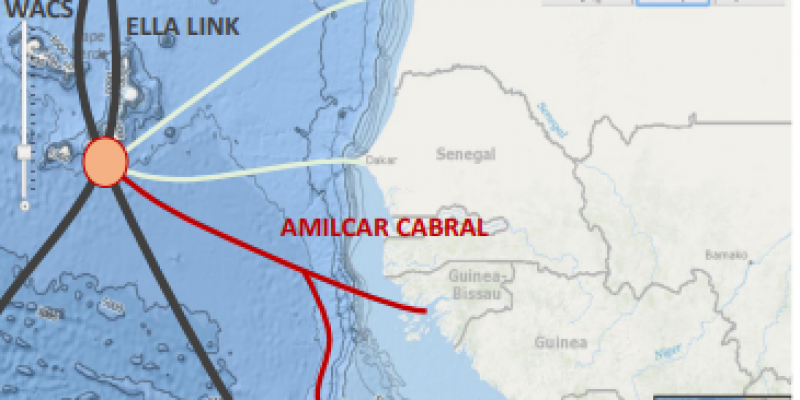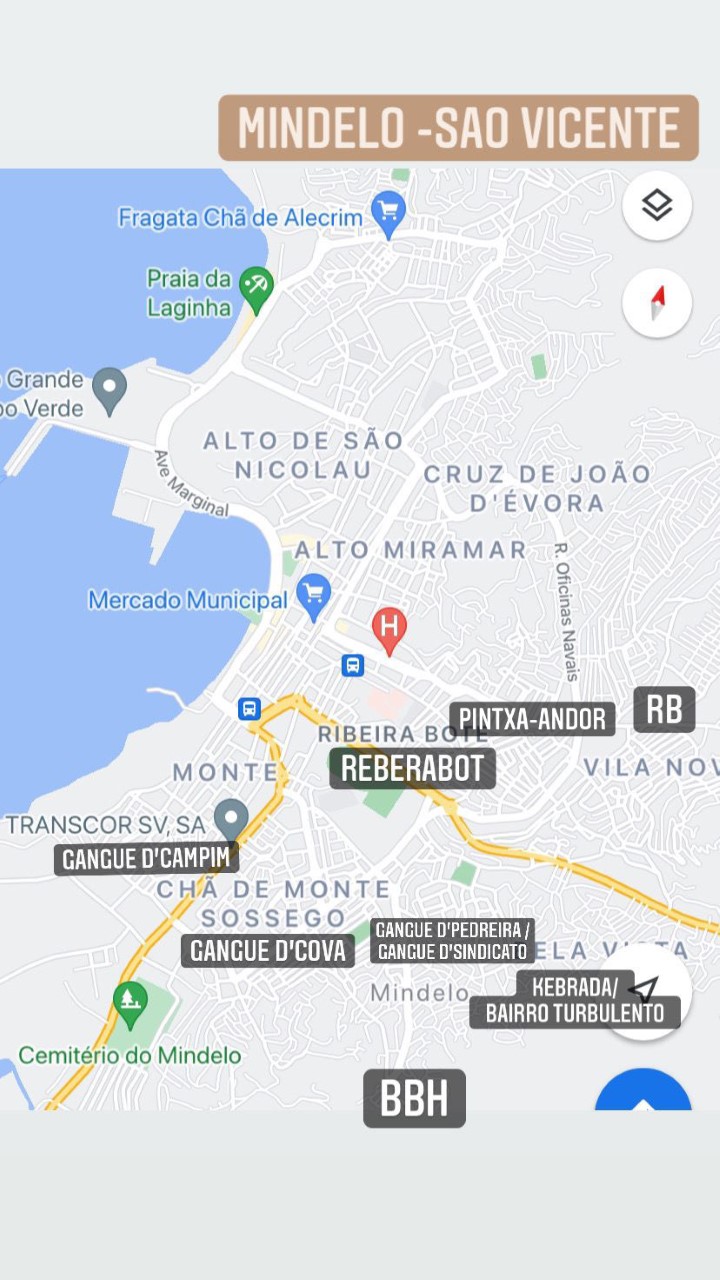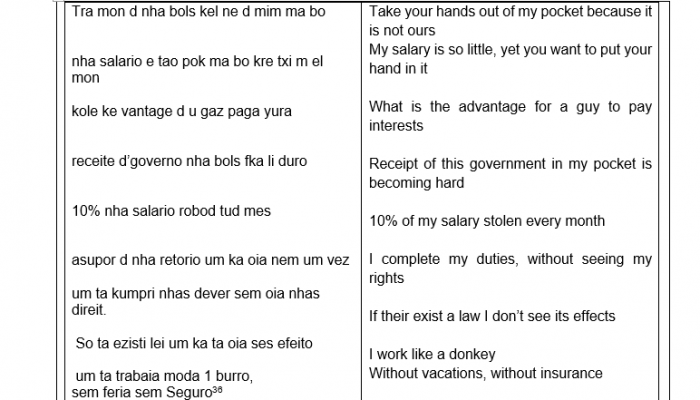“Nobody can stay behind”; Assessing the Large Rates of Cape Verde’s unemployed and imprisoned Youth
By Gilda Christina Rodrigues
This post is based on research conducted for the course 'Economy, Geography and Society in Africa'. For my eventual research, I got inspired by a news report, shown at RTC, radio telivisão Cabo Verdeana) on how the prisons in Cape Verde are overpopulated, and mainly with youth, and solutions such as an electric bracelet are being considered, whereas I wondered if unemployment was not at the root of this problem? This led to my research where I thus assess the unemployment data and prison rates, and especially youth unemployment, however including the policy domain defined by Reinders et. al, on productive employment, thus a falling pit for policy writers might be that they only focus on how to create employment, disregarding if the employment is productive, this refers to a fair salary, insurance, etc.
Unemployment and Prison Population
Looking at Cape Verde’s local prison population, one finds an increasing line over the years. A detailed study by the Cape Verdean bureau for statistics, reveals that the prison population is mostly male, only 46 women were counted from the 1500 prisoners in 2018, and relatively young, 49,6% are under the age of 29 (see figure 1).

Figure 1; Prison population age, source INE
Remarking is that nearly 75 percent were employed before going to prison. The study claimed that only 11 percent of the prisoners revealed that their motive for committing a crime was due to financial reasons, however, 35 percent revealed that it was due to drug and alcohol abuse, and 12 percent because of family, the two latter reasons I also relate to financial reasons, even though the study does not mention that, many seek refuge in drug, but namely alcohol due to financial reasons. Further, the type of crimes committed lead to the focus on youth unemployment, considering way more youth commit crimes against property, from the age group 16-21 72 percent is in jail due to crimes against property, age group to 22-24 65 percent, age 25-29 49,4% (see figure 2), and this gets lesser the higher the age, this of the total 34 percent which is imprisoned due to these types of crimes. These numbers raise questions on the productiveness of employment considering a high rate is employed however the motives for crime and type of crimes committed might suggest that if there is employment it might lack, and that unemployment first might still be a problem.

Figure 2; Type of crimes committed by age groups under 29, source INE
The latter I state since that youth are in prison namely due to crimes against property, and youth employment remains high on the island archipelago, see figure 2. Compared with the general unemployment line, which is high in itself, one can see that youth unemployment is even higher than the national average.
The Goverment's Response to Youth Unemployment

Figure 3; Youth unemployment in Cape Verde source; World bank
Considering youth unemployment and unemployment, the Cape Verdean government has been discussing these two social shortcomings for ages. Nidje states that in Africa governance influences youth unemployment, through factors such as corruption, good economic policies, and political stability, that is why the government’s initiatives should be considered while researching unemployment. In 2009 a strategic youth policy was introduced, it was intended to be implemented between 2012, and 2016, however became extended to 2020. Further, one of the latest plans is to turn Cape Verde into a digital hub, the plan for this digital hub mentions that creating youth employment. Further, on the website of the Cape Verdean governments website one can find several publications on youth unemployment, “Ninguem pode ficar Para tras”, or, Nobody can stay behind, was the government’s motto until 2019, discussing creating employment namely integrating youth into the Cape Verdean economy and employment market.

Figure 4; Map of the potential digital hub, source EDCV
Listening to the Youth
To asses, the reality of the youth, qualitative methods are considered, first by assessing qualitative research earlier done, and second by analyzing Cape Verdean hip-hop lyrics by youth. Zoettl explains how most youth get involved in gangs, gangs started to appear in the two largest cities Praia and Mindelo, between 2003 and 2014, Praia counting 90, and Mindelo 12 gangs. The emerging of these gangs has been blamed on multiple factors, such as unemployment, and family problems, etc. However to blame these broken families is merely a measure of the government to put the blame elsewhere, instead of facing youth unemployment, and proper education as one of the main factors. For this post I tried to map the gangs that there are in Mindelo with the help of a cousin and managed to map 10 of the gangs, to visualize how this situates in a small city like Mindelo.

Figure 5; Mapping the gangs of Mindelo, source author
Finally, Zoettl makes a crucial point, that for many the prison experience is experienced as a “time out” of the unstable gang life and overall marginalized position in society, considering they are often left out of Cape Verde’s accelerated growth. This marginal position he describes is a permanent state of exclusion, and that chances for life improvement are slim, living in the peripheries of Mindelo and Praia. A society that is rapidly changing and modernizing, might lead a part of society to a certain amount of risk and uncertainty since the mid-twenty century employment has been less secure, but as well the jobs themselves are insecure and leads thus to social exclusion.

Figure 6: Fragment of "Tra mon d'nha bols with translation
Apart from Zoettl’s paper, a few lyrics by rappers from Mindelo were analysed as well, to add more dimension to the youth’s view of their position in Cape Verdean society, these youth are not necessarily involved with gang-related matters. However, reading and listening to these texts, one can hear that the youth are aware of the employment issues the country is facing since they’re the most affected by this (Escura realidade). They as well express their frustrations that the opportunities the government is creating might be kept in a certain inner circle, or even only kept in the capital (Hora d’Mudança). Further, on productive employment another song “Tra mon d’nha bols”, or take your hands out of my pocket, where they express how their salary is too low, and lack of insurance, vacation, and if there is a law the effects of it are not visible in their daily life, this can be linked back to productive employment as a part of inclusive development, even though the country’s GDP grows, the lack of unemployment is still an issue, moreover, the lack of productive unemployment. There are many Cape Verdean hip-hop songs from the 90’s that one can find that discusses youth unemployment or unemployment in general, see below.
Final Remarks
To conclude on this topic is not a conclusion, but rather an entry point, first to revisit the way one might look as this youth stuck in prison or within a gang life, as a youth in need of a government to include them rather than as a menace to society. This statement is triggered by the way RTC discusses that they want to solve the problems of overpopulated prisons, with electronic ankle bracelets, rather than to tackle the root problem and see what motivated most of the youth to join these gangs. To deepen on this aspect I have to mention that the violence problem has been diminished in Mindelo, considering that “ninjas”, or special cops that disguised as citizens and treat criminals with violence on the spot, were implemented. However, this was a solution to the violence problem, it does not solve the problem of these marginalized youth, or finds a way to include them in society.
Second, assessing the existing policies and debates by the government shows that this is an urgent topic to them. Nonetheless, there are still questions raised about how they are dividing these few options that they are creating, and I question that I would love to raise is are they focussing on the appropriate sectors. Analysing Cape Verde’s gdp, shows that agriculture is the smallest sector, 8,9% of the total gdp, however up until 2018 40 percent of the population was living in rural areas, thus investing in agricultural production, by revisiting or reinventing irrigation systems, so that the rain might not be the main factor to motivate such poor production in this sector. Tourism has been booming in the past few years, disregarding the COVID-19 period, however, this creates only jobs on certain islands, and creates a new dependency on the West, and often still lacks to the consummation of local products. Such a digital hub might create good new options, and diversification, however, productive employment should be always attained, as well as a fair division of employment opportunities throughout the islands.
Finally why I open this conclusion with this post being an entry point? There are many oppurtunitiees to be developed and exploited within the islands, however, while creating opportunities to better the island’s economy, creating employment in a productive matter and including youth should be a number one priority. However, this needs further research, and policy writing, while doing these two the voices of these youth in informal songs should be incorporated while designing these plans for them to create something that fits the Cape Verdean society’s needs.
Pa um Cabo Verde mdjor.
References
Abé Ndjié, Anicetus, Henri Atangana Ondoa, and Henri Ngoa Tabi. “Governance and Youth Unemployment in Africa.” Labor History 60, no. 6 (2019): 869–82. https://doi.org/10.1080/0023656X.2019.1645320.
Agoa.info. “Trade Profiles.” Agoa.info - African Growth and Opportunity Act. Accessed October 21, 2021. https://agoa.info/profiles/cape-verde.html.
EDCV. Estratégia Digital de Cabo Verde, December 27, 2019. https://estrategiadigital.gov.cv/index.php/en/.
Fonseca, Marcos. “Cadeias Do País Com Mais De Mil e Quinhentos Presos.” RTC.cv, October 4, 2021. https://rtc.cv/noticia/noticia-details?id=8154.
Governo de Cabo Verde. “Políticas Ativas De Emprego – Desempenho Altamente Positivo Do Programa De Estágios Profissionais e Formação Profissional Em 2019.” Governo de Cabo Verde, January 7, 2020. https://www.governo.cv/politicas-ativas-de-emprego-desempenho-altamente-positivo-do-programa-de-estagios-profissionais-e-formacao-profissional-em-2019.
Governo de Cabo Verde. “Projecto ‘Emprego Jovem E Coesão Social’ Financia Desenvolvimento Social De Safende.” Governo de Cabo Verde, May 14, 2010. https://www.governo.cv/projecto-emprego-jovem-e-coesao-social-financia-desenvolvimento-social-de-safende/.
Instituto National de Estatistica Cabo Verde. “Recensamento Prisonal- 2018 Relatorio,” 2018. https://ine.cv/wp-content/uploads/2019/05/censo-prisional-2018-relatorio.pdf.
KGB squad. “KGB Squad - Labirint Psiclógic (CD Completo).” YouTube. YouTube, May 12, 2021. https://www.youtube.com/watch?v=vmAIvM0WARM.
L.O.D & Kiditch Beatz . “L.O.D & Kiditch Beatz - Hora D' Mudança (Official Audio).” YouTube. YouTube, March 28, 2021. https://www.youtube.com/watch?v=RHhBNjrREA4.
L.O.D. & Kidditch beatz. “L.O.D & Kiditch Beatz - Trá Mon d' Nha Bolss Feat. Ron Del Bapto & Mc Seiva (Official Audio).” www.youube.com, May 28, 2021. https://www.youtube.com/watch?v=RT1H0rVd1mU.
Minesteria das Financias . “‘Cabo Verde Tem Feito Um Progresso Importante’ – Olavo Correia.” Minesteria das Financias , February 14, 2020. https://www.mf.gov.cv/web/mf/-/-cabo-verde-tem-feito-um-progresso-importante-olavo-correia?inheritRedirect=true .
Minesterio de Juventude e Desporto . “Respostas a Juventude - Youthpolicy.org,” 2009. https://www.youthpolicy.org/national/Cape_Verde_2009_National_Youth_Policy.pdf.
Press, Editors of Salem. Analyzing Crime and Social Control. Ipswich: Salem Press, 2014.
Reinders, Simone, Marleen Dekker, Frank van Kesteren and Loes Oudenhuijsen (INCLUDE). 2019. Inclusive Development in Africa. Synthesis report series. March 2019. Pp1-31 https://includeplatform.net/wp-content/uploads/2019/07/ID-synthesis-INCLUDE-Final.pdf
Siri, Gabriel, and Piet Goovaerts. “ANALYSIS OF THE COSTS AND BENEFITS OF PUBLIC WORKS PROGRAMS IN CAPE VERDE .” www.ilo.org, July 2002. https://www.ilo.org/wcmsp5/groups/public/@ed_emp/@emp_policy/@invest/documents/publication/wcms_asist_8331.pdf.
US State Department . “Cape Verde-Cabo Verde.” Cape Verde (Cabo Verde). Accessed October 20, 2021. https://www.prisonstudies.org/country/cape-verde-cabo-verde.
US State Department. “Gambia.” Gambia | World Prison Brief, January 1, 1999. https://www.prisonstudies.org/country/gambia.
US State Department. “Senegal.” Senegal | World Prison Brief, January 1, 1970. https://www.prisonstudies.org/country/senegal.
World Bank. “Unemployment, total (% of total labor force) (modeled ILO estimate) - Cabo Verde, Gambia, The, Senegal.” Data. Accessed October 20, 2021. https://data.worldbank.org/indicator/SL.UEM.TOTL.ZS?end=2020&locations=CV-GM-SN&start=1997&view=chart.
World Bank. “Unemployment, Youth Total (% of Total Labor Force Ages 15-24) (National Estimate) - Cabo Verde.” Data. Accessed October 20, 2021. https://data.worldbank.org/indicator/SL.UEM.1524.NE.ZS?end=2019&locations=CV&start=1993.
Youthpolicy.org. “Cape Verde: Factsheets.” Factsheets Youthpolicyorg, 2014. https://www.youthpolicy.org/factsheets/country/cape-verde/.
Zoettl, Peter Anton. “My Body Imprisoned, My Soul Relieved: Youth, Gangs and Prison in Cape Verde.” European Journal of Cultural Studies 21, no. 2 (2018): 148–64.
Zoettl, Peter Anton. ““Prison Is for Young People!” Youth, Violence, and the State in Praia and Mindelo, Cape Verde.” African Studies Review 59, no. 2 (2016): 231–49.


